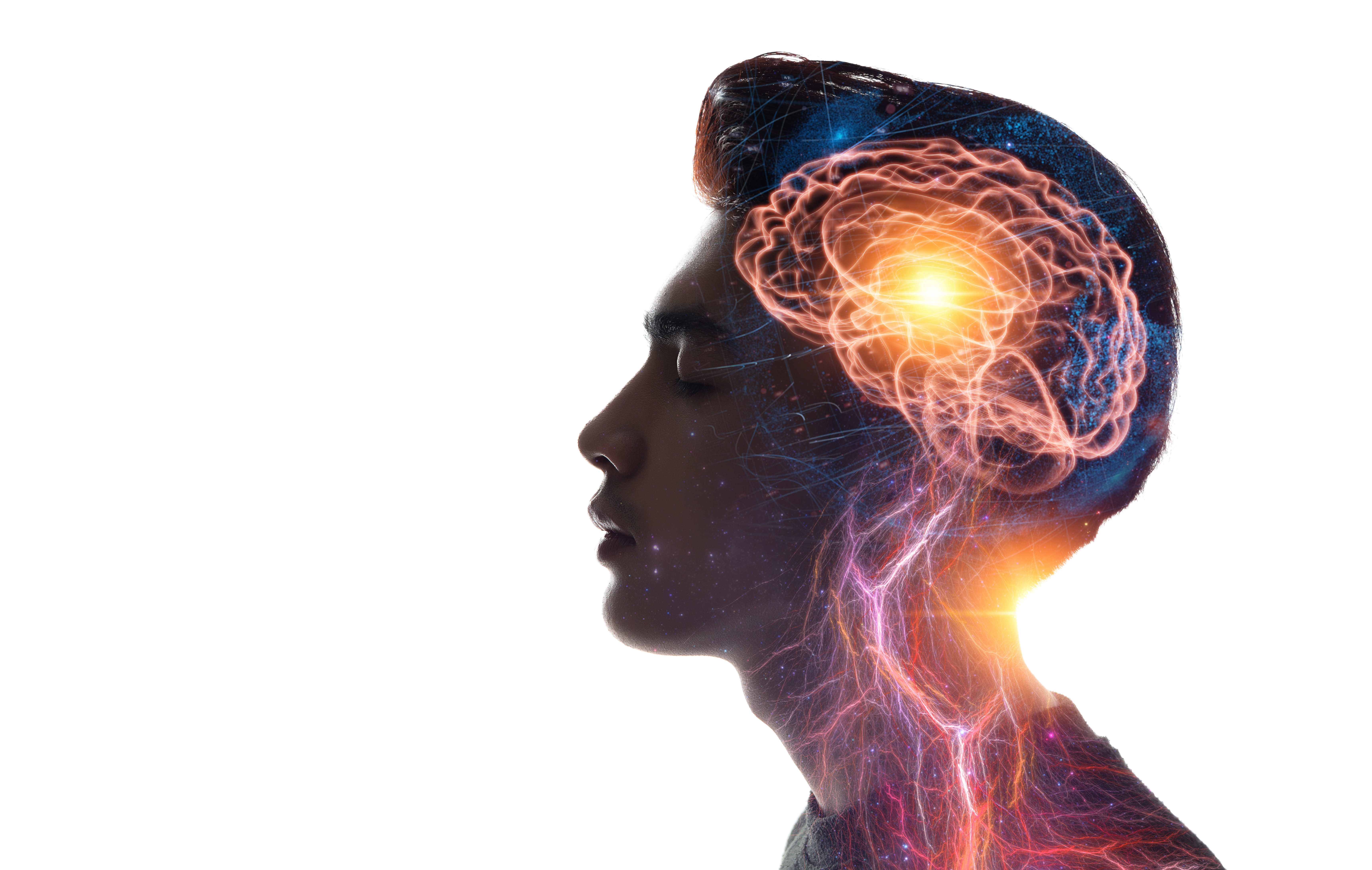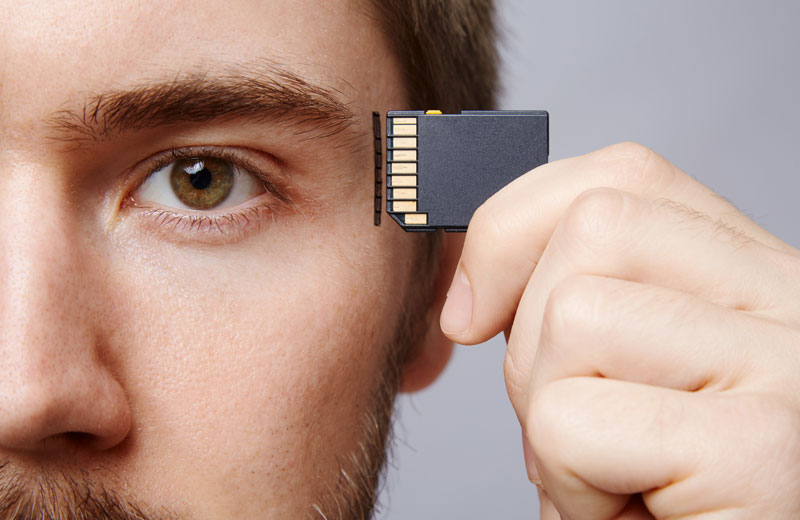Memory is one of the most essential functions of the human mind. It is the foundation of learning, decision-making, and the formation of our identities. It encompasses a range of systems that allow us to register, retain and recall information over time. In this article, we explore some of the key features of memory, including short-term working memory, long-term storage, the brain structures that are involved, and how this cognitive capacity can be strengthened!
Jump to:

Different Types of Memory
Our ability to remember is far more complex than just a single process in the brain. Memory is actually made up of many different components, each with its own specific function.
- Short term memory (Working memory): acts as a temporary holding place for information that we need in the moment, like a phone number we're about to dial. It allows us to remember the number just long enough to dial it or recall the details of a conversation seconds after it happens.
- Long term memory: Long-term memory is where we store memories for much longer periods. Within long-term memory there are explicit (declarative) memories of facts and events that we can consciously recall. There are also implicit (non-declarative) memories that influence skills and behaviours without conscious thought (for example, knowing how to ride a bike or play an instrument).
- Episodic memory: Is a type of declarative memory which allows us to mentally travel back to significant occasions, reliving details and emotions associated with those events.
- Semantic memory: Semantic memory stores general knowledge and facts rather than personal experiences. It encompasses our understanding of language, concepts, and the world.
- Prospective memory: Finally, prospective memory enables us to remember to carry out intentions and plans in the future, like attending appointments or completing tasks.
Recommended for you!
Best SellersHow Working Memory Works
Working memory is one of the most vital cognitive functions we rely on throughout our lives. Picture it: you’re at the store looking at your shopping list and are mentally keeping track of everything you still need to grab off the shelves… that's your working memory in action. Doing maths problems in your head is also your working memory working hard!
Essentially, this active short-term memory system temporarily holds information we need for complex ongoing tasks like learning, reasoning, and comprehension. Without working memory, we would struggle to do something as simple as dialling a phone number or following a recipe.
It acts as a mental notepad to keep important details readily accessible. It allows us to keep multiple pieces of temporary information in mind at once while manipulating them to achieve a goal. For example, working memory enables us to multiply two numbers together while holding the intermediate result before adding a third number.
It’s believed that working memory involves a brain network that’s centred around the prefrontal cortex. This communicates with sensory processing regions. It has a limited capacity and can only juggle a few pieces of information at a time.
Working memory is also vital for high-level cognition. It allows us to relate new ideas to prior knowledge. It’s essential for any task that requires actively-holding details in mind, like comparing options or following instructions. It also helps you to learn better by connecting new information to what you already know in your mind.

The Brain’s Role in Memory Control
Our brains have a complex system for encoding, storing and retrieving our memories, but where exactly do our memories live inside the brain?
Scientists believe that memories are stored as connections between neurons called synaptic connections. When we experience events, sensory information enters the brain and neurons communicate with each other, strengthening synapses in neural networks that are specific to the memory.
The hippocampus - located in the medial temporal lobe in the brain - is one of the most crucial structures for creating new episodic and spatial memories. It helps to assemble information from different sensory regions into coherent representations that can be stored long-term. It acts as a memory indexer, processing incoming information and sending it to the appropriate region for storage.
Then there’s the prefrontal cortex - located in the frontal lobe - which also contributes to long-term memory encoding and retrieval. As the centre of executive function, it focuses attention on important details, organises information for memory storage, and searches for relevant memories during recall. The prefrontal cortex focuses attention on important details and makes associations for efficient storage and access.
Long-term memories involve more permanent changes in synaptic strength and are largely stored in the neocortex: the outer surface of the brain that’s responsible for higher cognitive functions. During consolidation, the hippocampus replays activity to the neocortex, essentially transferring memories for more permanent storage. Specific sensory details are stored in corresponding sensory areas. The strength of neocortical connections determines the longevity of memories.
Next is the amygdala, which is located in the medial temporal lobe, just in front of the hippocampus. Its job involves processing emotional memories. It attaches emotional significance to experiences and modulates memory consolidation in the hippocampus and prefrontal cortex, prioritising storage for impactful events. This explains why emotional memories tend to be more vivid and compared to mundane memories.

Improving Your Memory
Although memory tends to naturally decline with age, research shows we can take active steps to improve our memory at any stage of life.
One of the most effective techniques is to use mnemonics to associate new information with existing knowledge in our long-term memory. This helps us to encode new memories more efficiently and provides cues for later retrieval. For example, there are visual mnemonics like the “memory palace”, where you imagine walking through a familiar place and mentally link new information to visuals along the route. This uses spatial memory to store visual representations of what you want to remember.
Acronyms are another example of mnemonic techniques, as well as rhymes and songs that set information into a melody. A great example of this is the rhyme to remember how many days are in each month: “Thirty days has September, April, June, and November…”.
Physical exercise also benefits memory by increasing blood flow, oxygenation, and growth factors in the brain. In fact, doing some sort of aerobic exercise before learning or recall tasks can immediately boost memory performance. That’s why exercise is so important. Staying active throughout your life is linked with better cognitive health.
Getting quality sleep is another important factor for improving memory, as memory consolidation occurs during sleep cycles. Getting 7-9 hours of sleep allows the brain to strengthen neural connections and integration, and memory tends to be best after a full night of sleep.
Any sort of mental stimulation whether it’s learning a new skill, studying a foreign language, or engaging in mentally demanding hobbies (like playing chess) helps to keep the brain’s plasticity, which is the brain’s ability to change and develop new circuits. The old view was that, after childhood, the brain lost much of its plasticity and flexibility. However, we now know that the brain can continue to form new neural connections and rewire circuits even into adulthood.
For those who want to strengthen their memory abilities, our Improve Your Memory online course provides practical techniques to improve retention and retrieval. Available for just £29 (save £98!), the course covers key aspects of memory that range from short-term working memory to long-term storage and retrieval. Whether you struggle with recall or simply want to optimise your cognitive performance, our Improve Your Memory course is perfect for making a practical effort to boost your memory and learn its intricacies.












